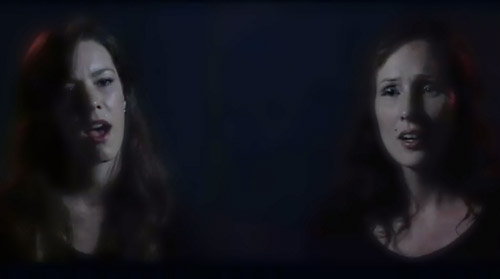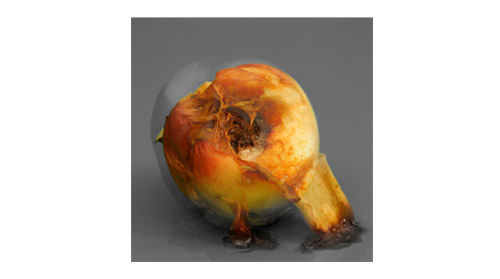Artists: Matilda Aslizadeh, Natalie Doonan, Gwenessa Lam, Natasha McHardy
Exhibition: Jan 14 – Feb 25, 2012
Opening Reception: Friday, Jan 13, 8 pm
Artist Talk: Saturday, Jan 14, 2 – 4 pm
Centre A is pleased to open the 2012 season with Waiting For, a group exhibition featuring four female artists: Vancouver based Matilda Aslizadeh, Natasha MacHardy, Gwenessa Lam, and Montreal based Natalie Doonan. This exhibition marks the 100th anniversary of the former BC Electric Railway Company Terminal where Centre A is located.
This group exhibition reflects upon the act of waiting within the historical experience of migration. Each artist takes a personal approach to explore the concept of waiting, tied to ideas of cultural and physical displacement.
What does it mean to wait? Is it the passive antithesis to the ambitions of capitalism, or is it an active space to imagine and shape reality? Feelings of suspense, dread, or hope are a few of the associations that can accompany an impending transformative event. Waiting can also be a space of contradiction, representing infinite possibility – what is to come – as well as tragic failure – what will not arrive. (Group Artist Statement)
Drawing from Vancouver’s local history, the artists have created new work in response to Centre A’s current site, location and architecture. The former BC Electric Railway Company Terminal was once the interurban train station and streetcar terminus, the hub of the City of Vancouver’s early thriving core. The site is steeped in the memories of waves of migrants waiting for the opportunity of a new future.
About the artists:
Matilda Aslizadeh‘s video installation depicts an abundant still life of fruit and flowers in perpetual transformation: some objects decay or are victims of violence, while others appear to grow younger or maintain their youth forever. By incorporating multiple temporalities and narratives the video explores the connection between desire, waiting, and mortality. The concept of waiting is premised on a linear, chronological understanding of life. Inherent in the decision to migrate is the desire to exchange one flow of time for another – one narrative of life for another – in order to access the American Dream. This endeavor has uncertain outcomes; mortality and fate present hard limits to the desire-driven, subjective experience of time.
Matilda Aslizadeh works primarily in the mediums of video and photography. Her video, Hero of Our Time is currently on tour through Canada in a group exhibition titled Diabolique that explores various responses to and representations of war and violence. Other recent showings include exhibitions at La Centrale, Montreal, Pari Nadimi Gallery, Toronto, SFU Gallery, Burnaby and BTAP Gallery, Tokyo. Her videos have also been exhibited internationally in film festivals including Golden Horse in Taipai and LA Freewaves in Los Angeles. Matilda is a sessional Instructor at Emily Carr University.
Natalie Doonan‘s two-channel video piece, Llorando/Crying, features two singers performing Rebekah del Rio’s rendition of Roy Orbison’s 1961 ballad. Each vocalist sings in her second language – one in English, one in Spanish. The strong emotive impact of the performance hinges not only on the personal narrative of unfulfilled expectations, but on the persistent desire to bridge the gap between self and other, which can only ever fall short. A second video, The Quiet Room, runs on a continuous loop, without beginning or end. Located in an undefined institutional space, the viewer is positioned in the room across the hall from “The Quiet Room,” which might be a place where terminal patients go to live their final days, a space for tranquil reflection, or where unacceptable behaviors are tamed.
Natalie Doonan is a multimedia and performance artist, based in Montreal, Québec. Her work explores sub economies and slow practices in urban space. Natalie recently founded le/the Sensorium, a curatorial project presenting a series of performances that engage participation through appealing to sensory-affective registers. Natalie holds a BA from the University of Toronto, A diploma from Sheridan College, an MFA from the University of British Columbia, and is pursuing an interdisciplinary PhD at Concordia University. Her work has been exhibited nationally and internationally.
Gwenessa Lam‘s painting and wall drawing are based on archival photographs from the BC Electric Railway Company. Employing strategies of doubling and mirroring, she re-imagines the interiors and characters associated with the BC Electric building since its construction in 1912. Like a Rorschach, the central seam of the image reveals a visible rupture or shift that presents a state of anticipation and transition. An empty train car and figures in stasis are manipulated into something strange or alien, suggesting a tension between a real and fictional history, a space in waiting.
Gwenessa Lam is a visual artist based in Vancouver. She received her BFA from the University of British Columbia and MFA from New York University. She attended the Skowhegan School of Painting and Sculpture, and was an artist-in-residence at MacDowell Colony, Yaddo, and Bemis Center for Contemporary Art. Gwenessa has exhibited nationally and internationally at venues such as the Bronx Museum of the Arts and Queens Museum of Art in New York. She is currently represented by Republic Gallery in Vancouver.
Natasha McHardy‘s site-specific work titled, Salon, consists of paper cutouts suspended from the ceiling. They are positioned within the frame of the arch on the west wall – a significant feature suggestive of the former tramline entrance. These painted icons hang in layers and extend out from the wall, reminiscent of theatrical backdrops. The arch acts like a container for the narrative depicted within its boundaries. The scene consists of uncanny mannequin heads that flank each side of the composition, mirroring each other. Salon is a dystopic pictorial narrative work that addresses the ways in which human beings thrive, and also fail, to function within mainstream culture.
Natasha McHardy is an interdisciplinary contemporary artist based in Vancouver. Her work engages with conceptual, visual and folk art histories while exploring ideas of play and relations of power within class, race and gender constructs. Natasha received a BFA and MFA from the University of British Columbia and has exhibited her work nationally and internationally. She received a 2005 Hampton Fund Research Grant (in collaboration), a 2003 Visual Arts Development Award and the B.C. Binning Award for Drawing in 2001.
Media Contact
Makiko Hara, Curator, Centre A
[email protected]
Acknowledgements:
This exhibition is made possible by the generous support of the Audain Foundation.
Centre A gratefully acknowledges the support of all its patrons, sponsors, members, partners, private foundations, and government funding agencies, including the Canada Council for the Arts, the British Columbia Arts Council, and the City of Vancouver through the Office of Cultural Affairs.
Centre A and the artist Natalie Doonan acknowledge the generous support of the Centre for Sensory Studies, the Faculty of Arts & Science, and the Centre for Interdisciplinary Studies in Society and Culture, Concordia University















